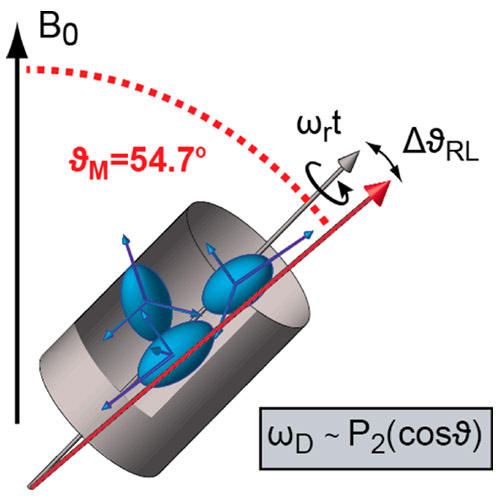Restoring Resolution in Biological Solid-State NMR under Conditions of Off-Magic-Angle Spinning
01-Dec-2015
J. Phys. Chem. Lett., 6 (24), pp 5040–5044, DOI: 10.1021/acs.jpclett.5b02467
Spin-state-selective excitation (S3E) experiments allow the selection of individual transitions in a coupled two spin system. We show that in the solid state, the dipole–dipole interaction (DD) between 15N and 1H in a 1H–15N bond and the chemical shift anisotropy (CSA) of 15N in an amide moiety mutually cancel each other for a particular multiplet component at high field, when the sample is spun off the magic angle (Arctan [√2] = 54.74°). The accuracy of the adjustment of the spinning angle is crucial in conventional experiments. We demonstrate that for S3E experiments, the requirement to spin the sample exactly at the magic angle is not mandatory. Applications of solid state NMR in narrow bore magnets will be facilitated where the adjustment of the magic angle is often difficult. The method opens new perspectives for the development of schemes to determine distances and to quantify dynamics in the solid state.











